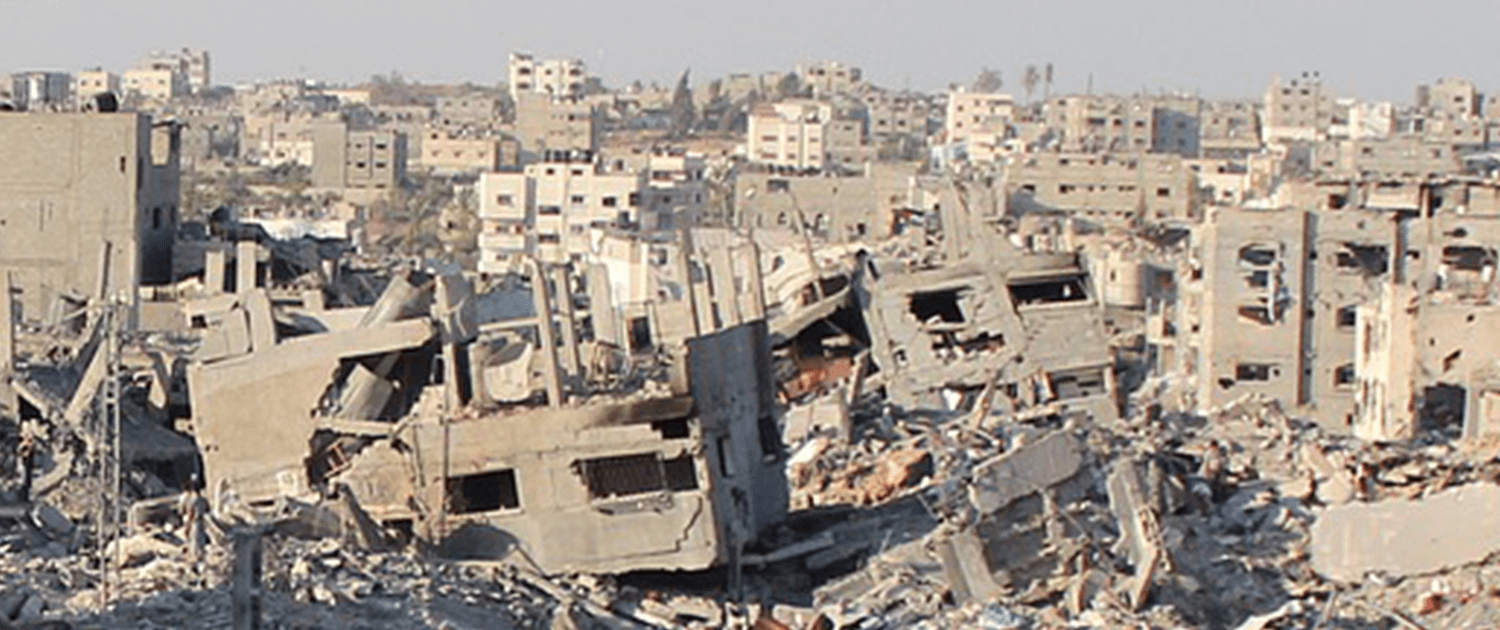It’s been three months since the conflict in the Gaza Strip has impacted Internet access for its occupants, with periods of complete telecommunication blackouts.
Measuring this impact has been difficult since most Internet statistics cover the Occupied Palestinian Territory, with its two parts, the West Bank and Gaza, as one entity.
However, via Cloudflare Radar, IODA, and on-ground accounts, we continue to see multiple networks operating in Gaza sub-optimally or not at all.
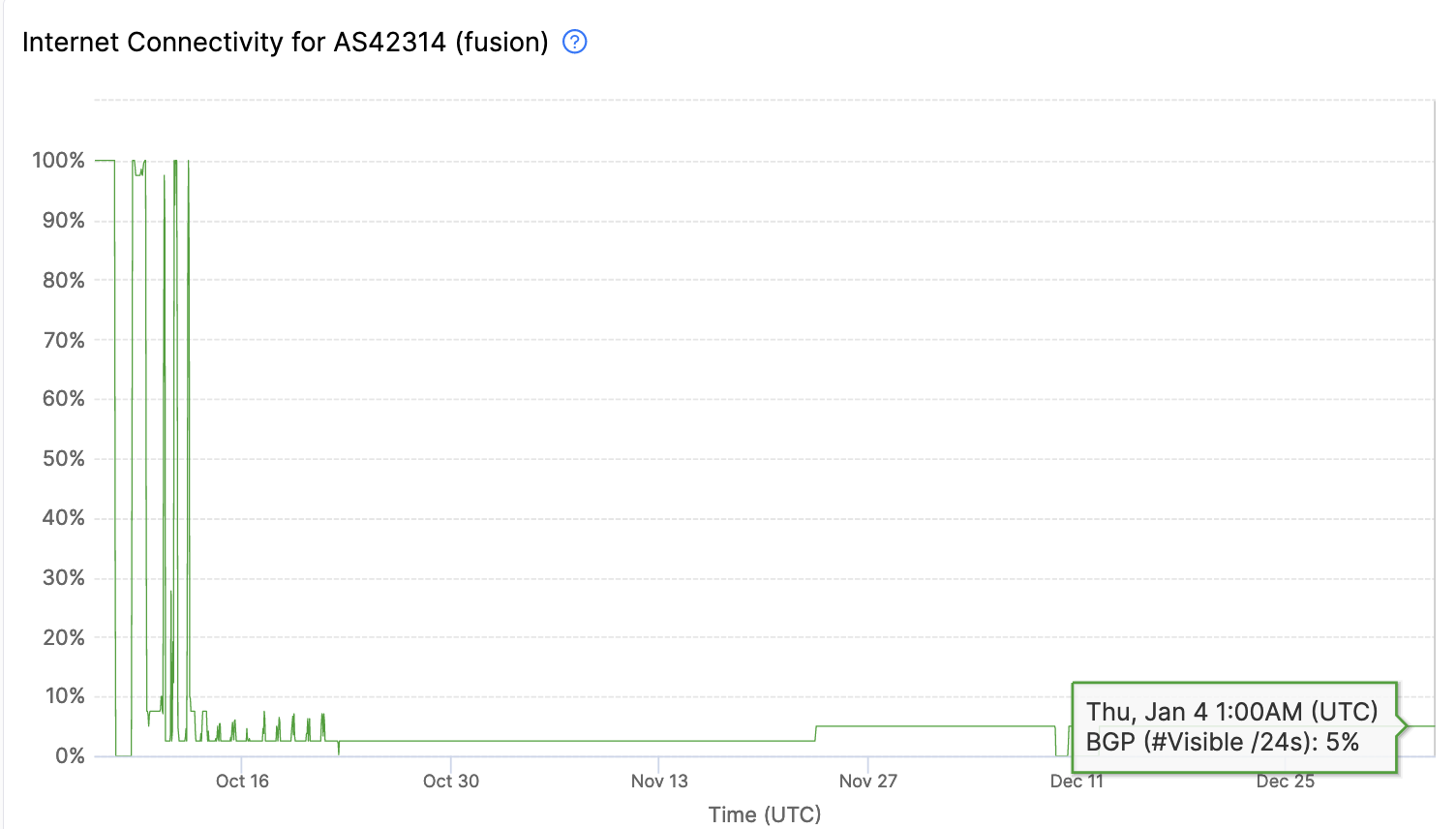
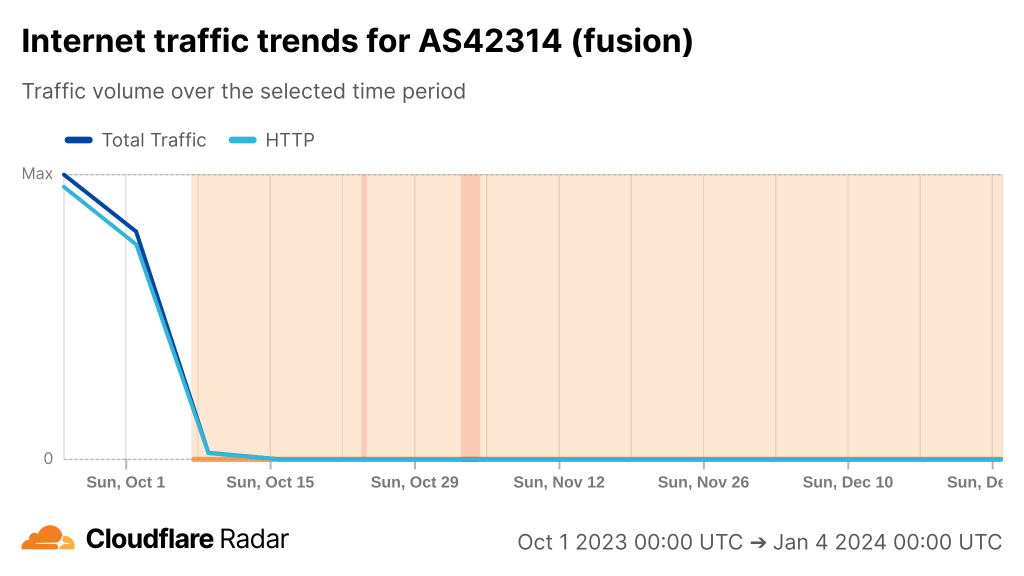
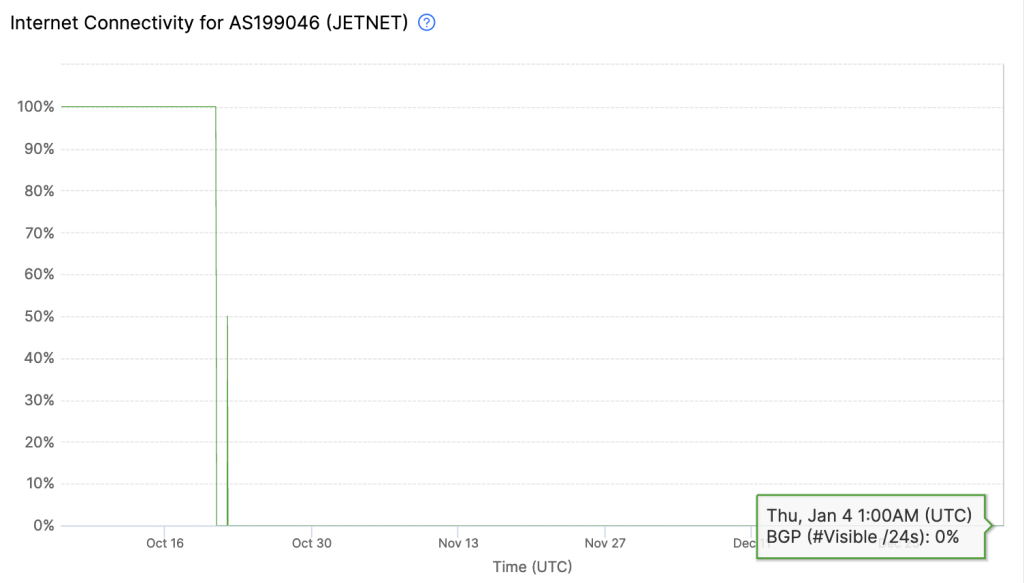
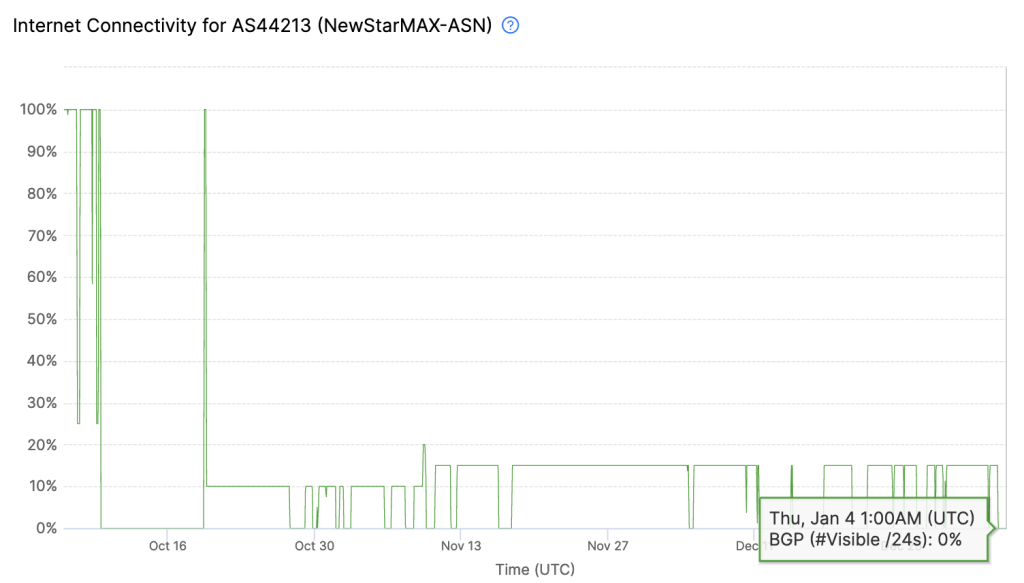
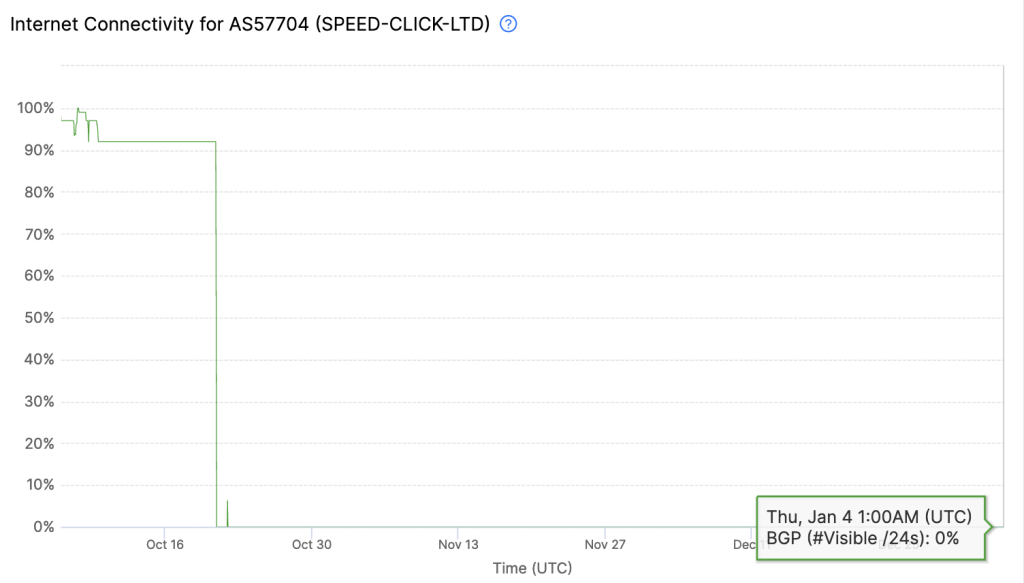
Internet Resilience is Critical to Maintaining Internet Accessibility
An estimated 80% of the northern Gaza city’s structures, some of which house Internet infrastructure, have been damaged since the start of the conflict, and electricity has been cut off or inaccessible on several occasions.
Critical Internet infrastructure plays a crucial role in keeping people connected during crises, providing access to essential information and support, and helping people stay in contact with loved ones across borders. As crises become drawn out, it also enables people to continue to earn a living, as has been the case for most parts of Ukraine over the past two years. As such, Internet infrastructure should be protected during times of conflict.
Internet penetration in Palestine has increased significantly in the past three years, ranging between 75% and 89%, as more people have become dependent on it for learning, telehealth, and working from home, and more businesses increasing their online services.
Before the conflict, Palestine’s Internet infrastructure was considered below average for the subregion at 40%, per the Pulse Internet Resilience Index. Its overall Internet resilience score is currently 47%. Mobile connectivity, network coverage, and a lack of data centers negatively affect the score.
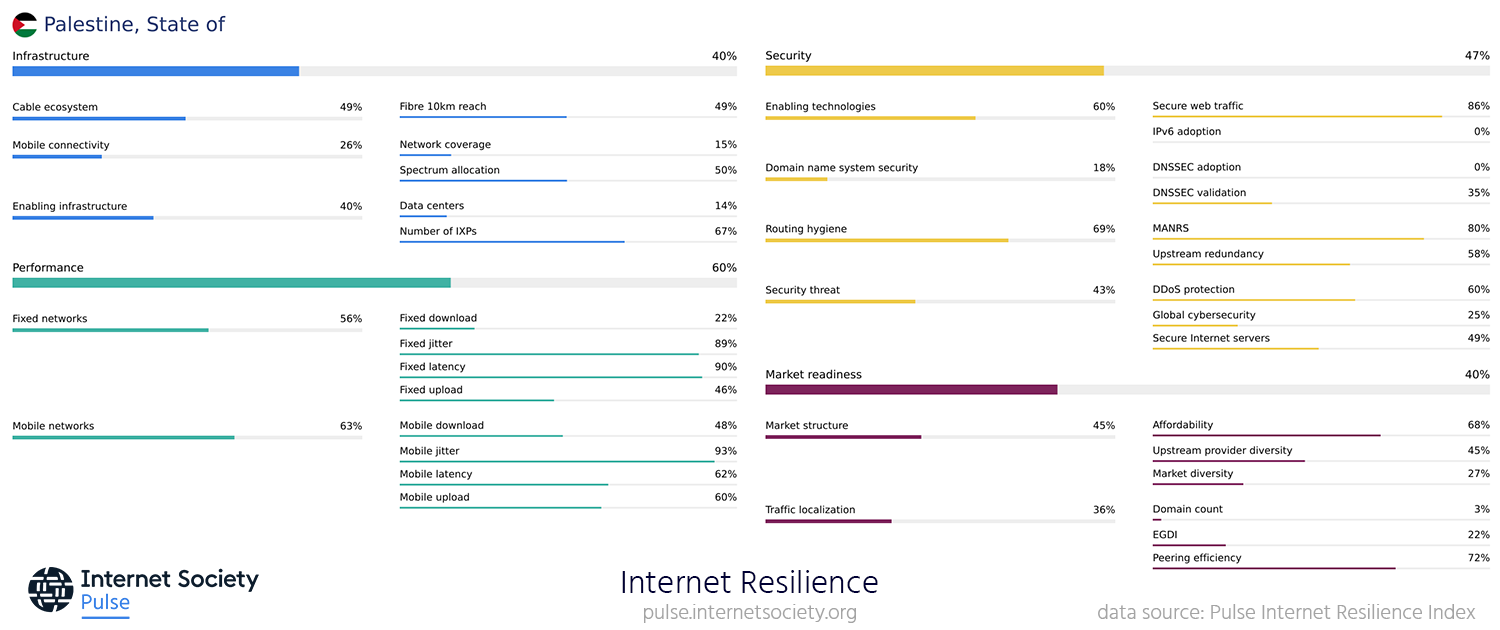
We will continue to follow and report on how Internet accessibility and its resilience is impacted in Palestine and its overall impact on the Internet.

